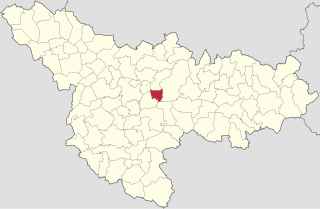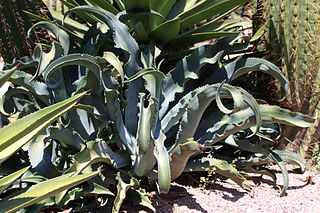
The Carpathian Mountains or Carpathians are a range of mountains forming an arc across Central Europe and Southeast Europe. Roughly 1,500 km (930 mi) long, it is the third-longest European mountain range after the Urals at 2,500 km (1,600 mi) and the Scandinavian Mountains at 1,700 km (1,100 mi). The range stretches from the far eastern Czech Republic (3%) and Austria (1%) in the northwest through Slovakia (21%), Poland (10%), Ukraine (10%), Romania (50%) to Serbia (5%) in the south. The highest range within the Carpathians is known as the Tatra Mountains in Poland and Slovakia, where the highest peaks exceed 2,600 m (8,500 ft). The second-highest range is the Southern Carpathians in Romania, where the highest peaks range between 2,500 m (8,200 ft) and 2,550 m (8,370 ft).

Quercus petraea, commonly known as the sessile oak, Cornish oak, Irish Oak or durmast oak, is a species of oak tree native to most of Europe and into Anatolia and Iran. The sessile oak is the national tree of Ireland, and an unofficial emblem in Wales and Cornwall.
UNESCO Biosphere Reserves are environment-protected scientific-research institutions of international status that are created with the intent for conservation in a natural state the most typical natural complexes of biosphere, conducting background ecological monitoring, studying of the surrounding natural environment, its changes under the activity of anthropogenic factors.

Gypsophila is a genus of flowering plants in the carnation family, Caryophyllaceae. They are native to Eurasia, Africa, Australia, and the Pacific Islands. Turkey has a particularly high diversity of Gypsophila taxa, with about 35 endemic species. Some Gypsophila are introduced species in other regions.

Gypsophila paniculata, the baby's breath, common gypsophila or panicled baby's-breath, is a species of flowering plant in the family Caryophyllaceae, native to central and eastern Europe. It is an herbaceous perennial growing to 1.2 m (4 ft) tall and wide, with mounds of branching stems covered in clouds of tiny white flowers in summer. Another possible source of this name is its scent, which has been described as sour milk, like a baby's “spit-up”. Its natural habitat is on the Steppes in dry, sandy and stony places, often on calcareous soils. Specimens of this plant were first sent to Linnaeus from St. Petersburg by the Swiss-Russian botanist Johann Amman.

Gypsophila vaccaria is a species of flowering plant in the family Caryophyllaceae. It is native from Portugal and Morocco to the Himalayas, and has been introduced into temperate areas worldwide. Among its many synonyms is Vaccaria hispanica, which was the only species placed in the genus Vaccaria. It is known by several common names including cowherb, cowcockle, cow basil, cow soapwort, and prairie carnation. It is an annual herb with blue-gray, waxy herbage and pale pink flowers.

Gypsophila elegans, the annual baby's-breath or showy baby's-breath, is an ornamental plant native to Asia and Europe.

The variable limestone babbler is a species of bird in the family Pellorneidae. It is found in the limestone hills of northern and eastern Thailand northwest to southern Myanmar. Two other Gypsophila species, the Annam limestone babbler and the rufous limestone babbler were previously considered subspecies of crispiforns, but a 2020 study found them to be distinct species.

Blepharis is a genus of plant in family Acanthaceae. It contains around 128 species found in seasonally dry to arid habitats from Africa through Arabia to Southeast Asia. In section Acanthodium, there are 13–15 species that use the C4 carbon fixation pathway. Phylogenetic analysis suggests that this pathway evolved up to three times independently in the genus over the last five million years.

Gypsophila repens, the alpine gypsophila or creeping baby's breath, is a species of flowering plant in the family Caryophyllaceae, native to the mountains of central and southern Europe, where it grows on dry, chalky slopes. The Latin name literally means "creeping chalk-lover". It is a prostrate, mat-forming herbaceous perennial, growing around 20 cm (8 in) tall by 30–50 cm (12–20 in) wide. For much of the summer it bears masses of star-shaped flowers which may be white, lilac or light purple, in loose panicles.

Bucovăț is a commune in Timiș County, Romania. It is composed of two villages, Bazoșu Nou and Bucovăț. Part of the commune of Remetea Mare until 2007, it was established as a separate commune in that year.

The jungle babblers are a family, Pellorneidae, of mostly Old World passerine birds belonging to the superfamily Sylvioidea. They are quite diverse in size and coloration, and usually characterised by soft, fluffy plumage and a tail on average the length of their body, or longer. These birds are found in tropical zones, with the greatest biodiversity in Southeast Asia and the Indian subcontinent.

Psammophiliella muralis is a species of flowering plants in the family Caryophyllaceae. It is known as annual gypsophila, cushion baby's-breath and low baby's-breath, an annual plant principally native to Europe except the British Isles. It can be also found in Central Asia, Turkey, the Caucasus, and Siberia. It is one of two species in genus Psammophiliella.
Eucalyptus gypsophila, also known as the kopi mallee, is a species of mallee that is native to Western Australia and South Australia. It has rough, flaky bark on the lower part of the trunk, smooth light grey bark above, lance-shaped adult leaves, flower buds mostly in groups of between seven and eleven, creamy white flowers and conical to cylindrical fruit.

Gypsophila fastigiata, the fastigiate gypsophila, is a species of flowering plant of the family Caryophyllaceae.

Sanrobertia is a genus of flowering plants within the subtribe Symphyotrichinae of the family Asteraceae. It is monotypic, meaning there is only one species within the genus. Sanrobertia gypsophila is a rare endemic known only from Nuevo León, Mexico.
Limestone wren-babbler has been split into three species:

Agave gypsophila is a species of plant in the Asparagaceae family and is endemic to the Mexican state of Guerrero. The specific epithet, gypsophila, means gypsum loving.















